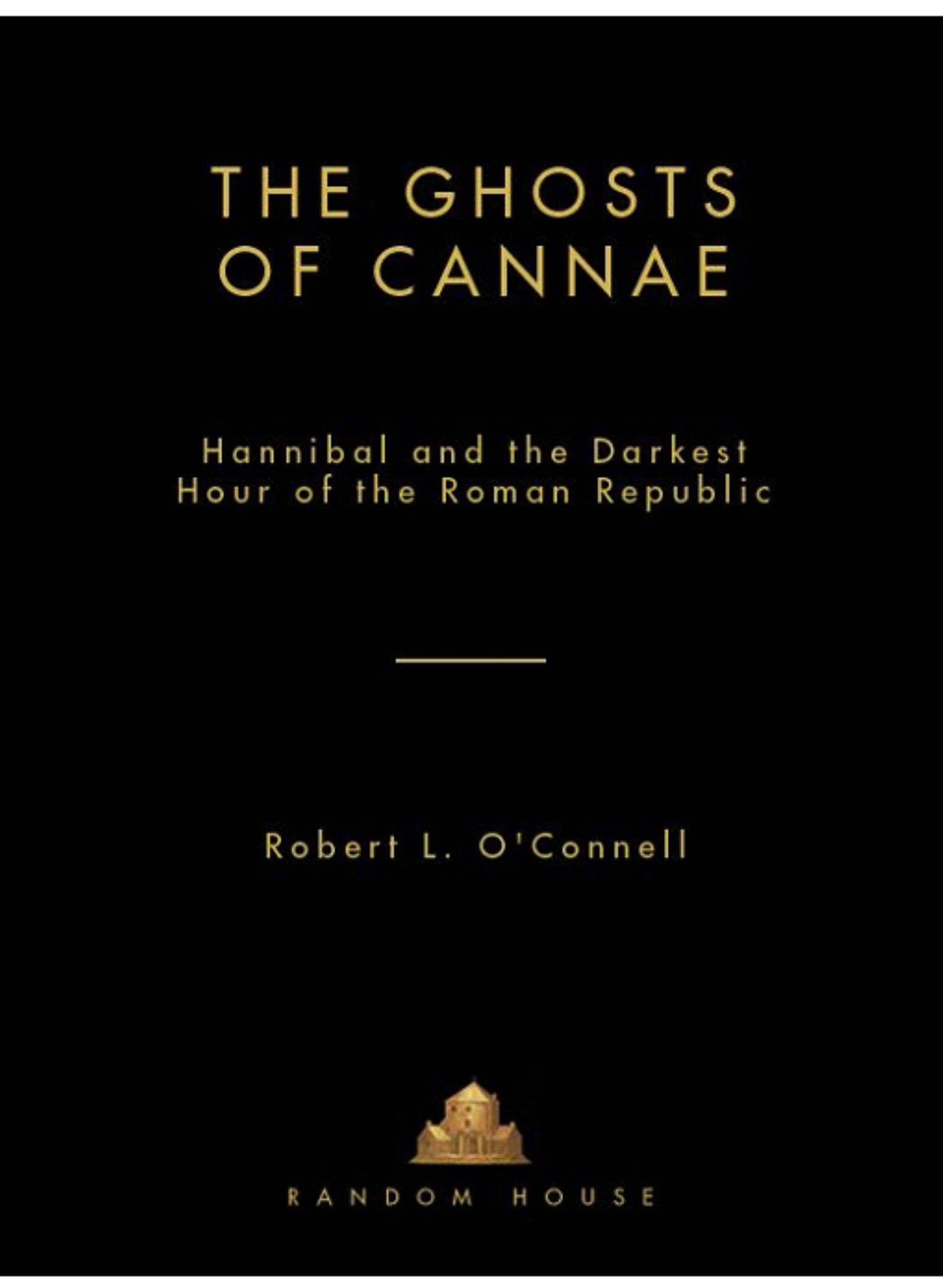The Ghosts of Cannae: Hannibal and the Darkest Hour of the Roman Republic by Robert L. O'Connell

Author:Robert L. O'Connell [O'Connell, Robert L.]
Language: eng
Format: mobi, azw3, epub, pdf
Tags: Ancient, Italy, Battle of, 2nd, Other, Carthage (Extinct city), Carthage (Extinct city) - Relations - Rome, North, 218-201 B.C, Campaigns, Rome - Army - History, Punic War, 218-201 B.C., 216 B.C, Cannae, 218-201 B.C - Campaigns, Rome, Rome - Relations - Tunisia - Carthage (Extinct city), Historical, Military, Hannibal, History, Egypt, Africa, General, Biography & Autobiography
ISBN: 9781400067022
Publisher: Random House, Inc.
Published: 2010-07-13T06:35:09+00:00
[5]
As the sun rose on Tuesday, the second day in August, the scarlet tunic signifying battle could be seen displayed above the tent of Terentius Varro, whose turn it was to command the Cannae army. Polybius says Varro’s men were eager for the fight, were at a near fever pitch of anticipation from the waiting.35 Orders would have been distributed to the tribunes in the night. The tribunes then would have assembled the men and cavalry in time to march out of camp just after dawn, cross the river, and join the troops in the smaller encampment on the right bank. All were now present, with the exception of ten thousand (probably a legion and an ala) left to guard the main camp and stage an assault on the Punic encampment during the battle. It is likely that the men guarding the main camp were the bulk of those fated to survive the day and become the living ghosts of Cannae.36 Those less fortunate, around seventy-six thousand men, would move into the customary formation—velites out front; triplex acies, compacted in the middle; and cavalry on the flanks—all awaiting the Carthaginians and destiny.
But exactly where were they? The short answer is that we will never know the precise site of the battle for sure; but that said, the issue has stirred up enough controversy over the years to make it worth considering. Geographically, there are basically two reference points—the location of Cannae itself and the River Aufidus, now called Ofanto. There are also two reliable historical artifacts: we know from Polybius that the battle was fought on the same side of the river as the smaller Roman camp, and the Roman line faced roughly south, with its right flank anchored by the river.37 It also makes sense that the Romans would have wanted their left flank resting against the highlands on which Cannae was perched, the idea being to make it impossible for Hannibal’s cavalry to sweep around either side to envelop them. The problem is that the distance between the bluffs and the modern Ofanto is far too narrow to accommodate anything like the size of the Roman army, no matter how compacted.
This led a number of respected scholars to propose that the battle was actually fought on the left side of the river,38 or on a broad plain to the east of Cannae.39 But the problem with the first view is that it clearly contradicts Polybius, who seldom made this sort of mistake; the drawback to the second is that the flat area to the east is easily wide enough to give Hannibal’s cavalry complete freedom, which raises the question of why Varro would have bothered crossing the river to fight there. Yet all of these interpretations assume that the course of today’s Ofanto is identical to that of the Aufidus, likely a bad bet, given the passage of twenty-two hundred years. This assumption is questioned by modern historians Peter Connolly and Adrian Goldsworthy.40 Their ingenious alternative is that the ancient river ran considerably to the north as it passed Cannae, leaving flats of about 1.
Download
The Ghosts of Cannae: Hannibal and the Darkest Hour of the Roman Republic by Robert L. O'Connell.azw3
The Ghosts of Cannae: Hannibal and the Darkest Hour of the Roman Republic by Robert L. O'Connell.epub
The Ghosts of Cannae: Hannibal and the Darkest Hour of the Roman Republic by Robert L. O'Connell.pdf
This site does not store any files on its server. We only index and link to content provided by other sites. Please contact the content providers to delete copyright contents if any and email us, we'll remove relevant links or contents immediately.
| Africa | Americas |
| Arctic & Antarctica | Asia |
| Australia & Oceania | Europe |
| Middle East | Russia |
| United States | World |
| Ancient Civilizations | Military |
| Historical Study & Educational Resources |
The Fall of Carthage by Adrian Goldsworthy(1093)
The Mysteries of Mithra by Cumont Franz(1045)
Sacred Britannia: The Gods and Rituals of Roman Britain by Aldhouse-Green Miranda(890)
The Ghosts of Cannae: Hannibal and the Darkest Hour of the Roman Republic by Robert L. O'Connell(864)
The Satyricon by Petronius(841)
Selected Political Speeches by Marcus Tullius Cicero(838)
Rome's Gothic Wars: From the Third Century to Alaric by Michael Kulikowski(817)
The Poison King: The Life and Legend of Mithradates, Rome's Deadliest Enemy by Adrienne Mayor(815)
Fall of the Roman Republic (Penguin Classics) by Plutarch(806)
Letters from a Stoic (Classics) by Seneca(773)
Rubicon: The Triumph and Tragedy of the Roman Republic by Tom Holland(736)
In Defence of the Republic by Cicero(726)
Hadrian and the Triumph of Rome by Everitt Anthony(719)
Delphi Complete Works of Cicero by Cicero(684)
The Roman History by Cassius Dio(657)
Letters from a Stoic by Seneca(620)
The History of the Decline and Fall of the Roman Empire by David Womersley(619)
The Twelve Caesars (Penguin Classics) by Suetonius & Robert Graves(617)
The Spartacus War by Strauss Barry(577)
